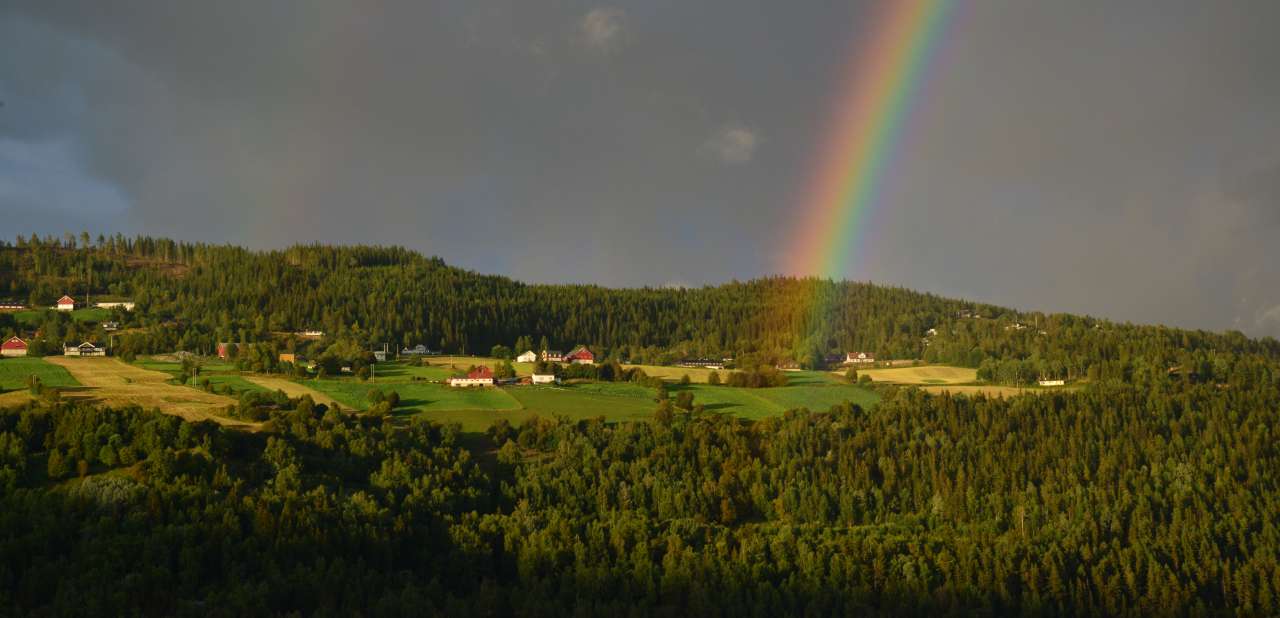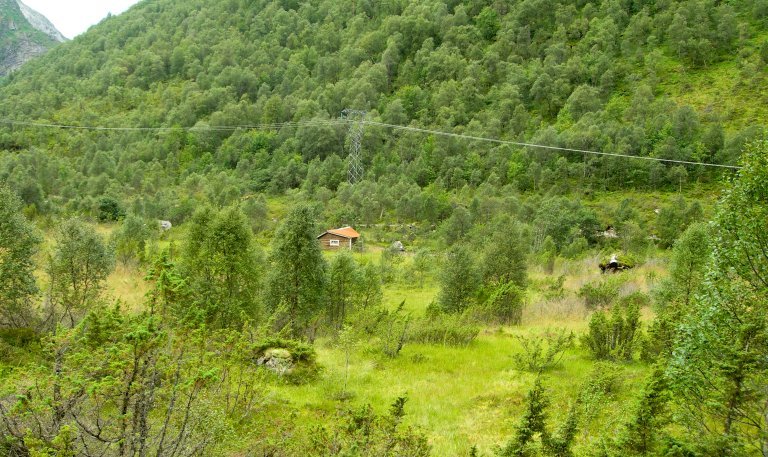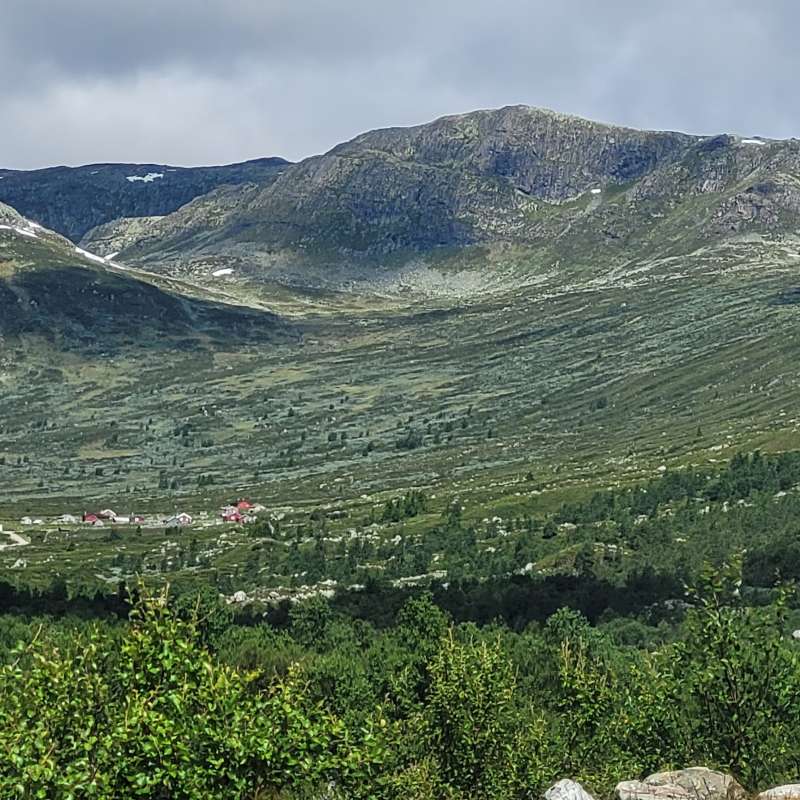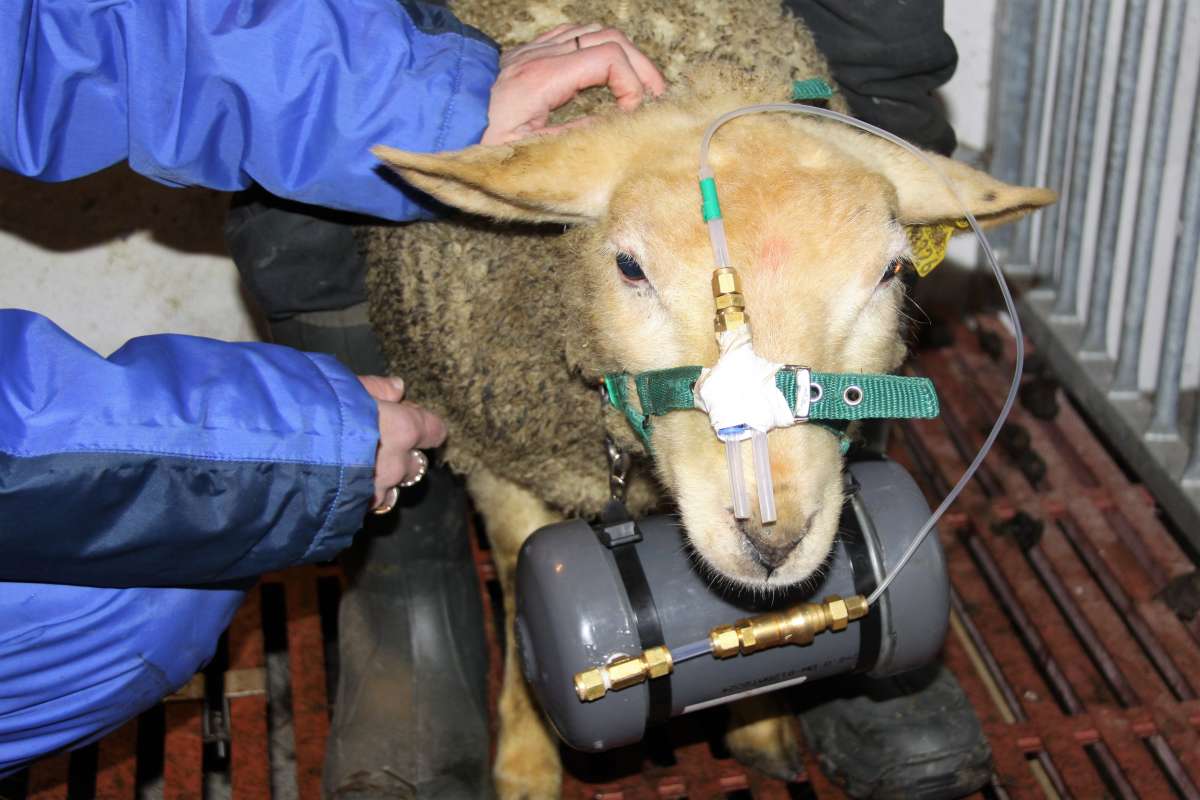Klima i endring
Klimaet er i endring, spesielt i de nordlige områdene. Den globale gjennomsnittstemperaturen er nå over 1 grad høyere enn i før-industriell tid, men i Norge er endringene større. Særlig vintertemperaturen og nedbørmengdene har gått opp. Vekstsesongen er blitt lengre, med både tidligere vår og seinere høst. Klimavariasjonene er blitt større, med tørkesommeren i Sør-Norge 2018 som eksempel. Klimaendringene gir fjellandbruket både utfordringer og muligheter. Hvordan kan vi utvikle og tilpasse fjellandbruket slik at mulighetene utnyttes og ulempene minimeres?
Endringer i arealbruk
Klimaendringene virker sammen med arealbruken. I fjellområder med mindre beiting og bruk av utmark, gror det nå igjen. Dette forsterkes av klimaendringene. Høyere temperaturer, lengre vekstsesong og mer regn gir bedre tilvekst. Skoggrensa går høyere til fjells og utmarksbeiter gror igjen. Dette kan redusere mulighetene for utmarksbeiting, og forsterke klimaendringene. Mer busk og skog i fjellet forsterker klimaendringene gjennom redusert albedo. Busker og trær tar opp karbondioksid når de vokser, men det betyr til sammenlikning lite i den lågvokste fjellskogen. Samtidig slipper landbruket ut klimagasser, og drøvtyggere spesielt metan. Mye tyder imidlertid på at de også kan fremme binding av karbon i jord, men her er det mange ubesvarte spørsmål.
Hvordan kan vi utvikle fjellandbruket slik at utslippene av klimagasser minimeres og opptakene maksimeres, samtidig som den bærekraftige ressursutnyttelsen styrkes til fordel for miljøet og fjellbøndenes økonomi?
Fjellene er også potensielle aktivitetsområder for “Det grønne skiftet”, deriblant for utbygging av vindkraftanlegg. Fjellbygdene er dessuten attraktive aktivitetsområder, og hyttebygginga i Norge når stadig nye høyder. Hvordan kan vi styrke en bærekraftig næringsutvikling i fjellbygdene samtidig som ressursgrunnlaget styrkes for framtidige generasjoner?





